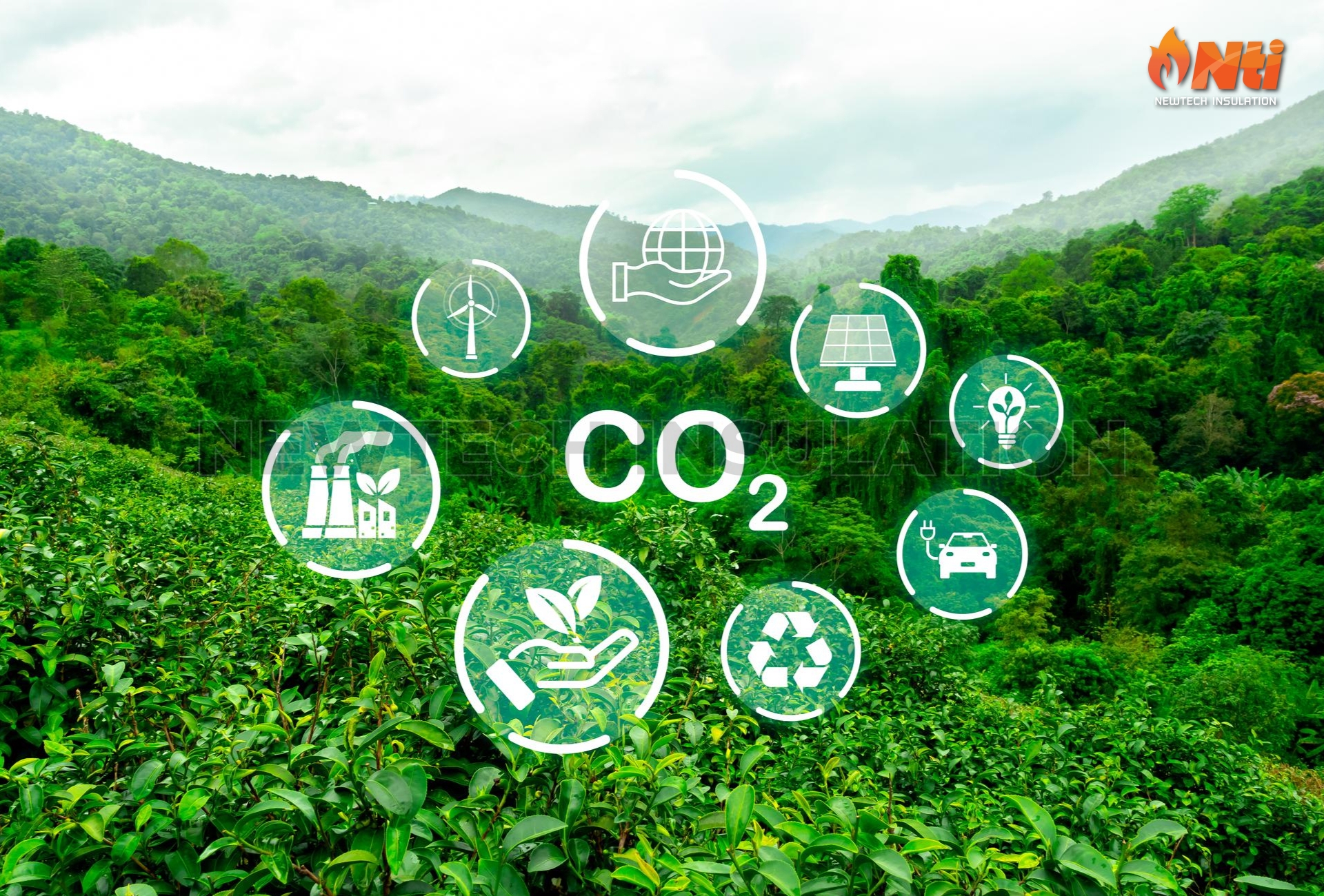



Any unauthorized copying, reproduction, modification, or distribution of any part of this content is strictly prohibited without written permission from Newtech Insulation Company Limited. Any violation will be prosecuted to the fullest extent of the law.
We are currently facing climate change or global warming, with temperatures rising worldwide. This impact is primarily caused by human activities, including the creation of machinery and technological advancements to drive economic growth in the industrial sector. These activities release large amounts of carbon dioxide and greenhouse gases into the environment, accumulating in the atmosphere and inevitably affecting the environment and human living conditions.
What are Carbon Credits?
Carbon credits are permissions granted to emit greenhouse gases. They are created through greenhouse gas reduction projects via various mechanisms and can be exchanged or bought and sold for use. Carbon credits were established to reduce greenhouse gas emissions into the environment, addressing the problem of large industries releasing significant amounts of carbon dioxide and greenhouse gases into the atmosphere. This leads to environmental destruction, global warming, and impacts on humans and animals living on Earth. For example, rising temperatures cause rapid melting of polar ice caps, raising sea levels and causing flooding in many countries. It also damages marine life and ecosystems due to changing seasons and weather conditions.
Carbon credits offer an alternative to reduce carbon dioxide and greenhouse gas emissions. They can be measured in tons and converted into carbon credits. These credits are traded in what is known as the carbon market.
Types of Carbon Markets
The carbon market is divided into two types:
Impact of Carbon Credits on Global Warming
Addressing the issue of greenhouse gas emissions through carbon credit policies and the establishment of carbon credit markets has led to pricing goods based on the amount of pollution released into the environment. It also raises awareness and emphasizes the social costs of greenhouse gas emissions.
The carbon credit market serves as a meeting point for buyers, sellers, investors, and others who share the goal of reducing greenhouse gas emissions into the environment. This market mechanism helps in several ways:
By putting a price on carbon emissions, carbon credits make it economically beneficial for companies to reduce their carbon footprint. This market-based approach complements regulatory efforts to combat global warming, offering a flexible and potentially cost-effective way to reduce overall greenhouse gas emissions.
While carbon credits are not a complete solution to global warming, they play a significant role in a comprehensive strategy to mitigate climate change. Combined with other efforts like renewable energy adoption, energy efficiency improvements, and changes in individual behavior, carbon credits contribute to the global effort to reduce greenhouse gas emissions and combat the effects of climate change.
Note: Some content is adapted from articles by the Thailand Greenhouse Gas Management Organization (Public Organization).